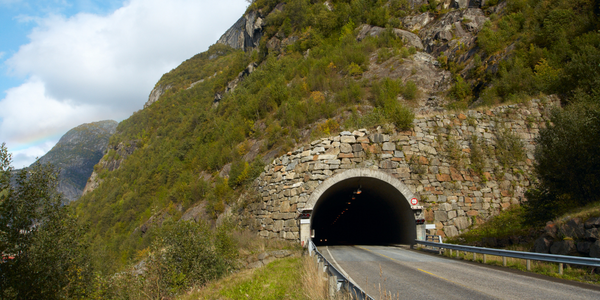技术
- 功能应用 - 企业资产管理系统 (EAM)
- 平台即服务 (PaaS) - 应用开发平台
适用行业
- 建筑物
- 建筑与基础设施
适用功能
- 设施管理
- 维护
用例
- 资产健康管理 (AHM)
- 资产生命周期管理
服务
- 系统集成
- 培训
关于客户
雪佛龙是世界领先的综合能源公司之一,不断致力于为全球数百万人提供可靠、负担得起且更加清洁的能源。他们相信人类的聪明才智能够带领我们走向更光明的未来。他们是创新者,甚至包括支持其全球办事处的设施维护和工作场所解决方案。管理雪佛龙工作场所的部门称为 CEMREC(雪佛龙环境管理和房地产公司)。他们负责管理雪佛龙经营业务的 47 个国家/地区的大量建筑群,确切地说是 1,282 座建筑。该集团的使命是通过成为其供应商值得信赖的合作伙伴来提高其全球业务的设施维护质量。
挑战
雪佛龙是一家领先的综合能源公司,通过其子公司雪佛龙环境管理和房地产公司 (CEMREC) 管理着遍布 47 个国家的 1,282 座建筑的庞大投资组合。最初,雪佛龙每个地点的员工都在支持自己的工作场所。然而,随着建筑组合的增长,他们实施了集成工作场所管理系统 (IWMS),以更好地支持工单管理并了解其建筑的运营方式。不幸的是,每个建筑运营团队都定制了 IWMS 以适应他们的工作流程,从而无法进行升级和改进,更重要的是无法进行业务分析。雪佛龙需要一种更好的方式来处理设施运营,提供灵活性、可扩展性和功能性,以创建他们为未来不断变化的工作场所设想的平台。
解决方案
雪佛龙在德勤咨询服务的帮助下,采用了 Nuvolo Connected Workplace 平台,并将其命名为 OMNI。 OMNI 捕获所有位置、工作和资产数据。雪佛龙通过利用 API 架构,利用 OMNI 转变了设施运营,以便供应商可以“插入”他们的系统和流程,标准化所有设施的数据和工作,并确保他们拥有捕获的所有数据。他们创建了一个标准技术接口(API),允许供应商“插入”他们的维护管理工具。现在,供应商入职或供应商更换是通过拔掉一个电源然后插入另一个电源来完成的。雪佛龙还运营着八个较小的工厂,由内部员工而非供应商负责。 OMNI 允许内部运营使用 Nuvolo 产品。无论工作是内部完成还是由供应商完成,所有数据都具有相同的外观,使其成为业务分析的一个数据集。
运营影响
数量效益

Case Study missing?
Start adding your own!
Register with your work email and create a new case study profile for your business.
相关案例.

Case Study
Energy Saving & Power Monitoring System
Recently a university in Taiwan was experiencing dramatic power usage increases due to its growing number of campus buildings and students. Aiming to analyze their power consumption and increase their power efficiency across 52 buildings, the university wanted to build a power management system utilizing web-based hardware and software. With these goals in mind, they contacted Advantech to help them develop their system and provide them with the means to save energy in the years to come.

Case Study
IoT System for Tunnel Construction
The Zenitaka Corporation ('Zenitaka') has two major business areas: its architectural business focuses on structures such as government buildings, office buildings, and commercial facilities, while its civil engineering business is targeted at structures such as tunnels, bridges and dams. Within these areas, there presented two issues that have always persisted in regard to the construction of mountain tunnels. These issues are 'improving safety" and "reducing energy consumption". Mountain tunnels construction requires a massive amount of electricity. This is because there are many kinds of electrical equipment being used day and night, including construction machinery, construction lighting, and ventilating fan. Despite this, the amount of power consumption is generally not tightly managed. In many cases, the exact amount of power consumption is only ascertained when the bill from the power company becomes available. Sometimes, corporations install demand-monitoring equipment to help curb the maximum power demanded. However, even in these cases, the devices only allow the total volume of power consumption to be ascertained, or they may issue warnings to prevent the contracted volume of power from being exceeded. In order to tackle the issue of reducing power consumption, it was first necessary to obtain an accurate breakdown of how much power was being used in each particular area. In other words, we needed to be able to visualize the amount of power being consumed. Safety, was also not being managed very rigorously. Even now, tunnel construction sites often use a 'name label' system for managing entry into the work site. Specifically, red labels with white reverse sides that bear the workers' names on both sides are displayed at the tunnel work site entrance. The workers themselves then flip the name label to the appropriate side when entering or exiting from the work site to indicate whether or not they are working inside the tunnel at any given time. If a worker forgets to flip his or her name label when entering or exiting from the tunnel, management cannot be performed effectively. In order to tackle the challenges mentioned above, Zenitaka decided to build a system that could improve the safety of tunnel construction as well as reduce the amount of power consumed. In other words, this new system would facilitate a clear picture of which workers were working in each location at the mountain tunnel construction site, as well as which processes were being carried out at those respective locations at any given time. The system would maintain the safety of all workers while also carefully controlling the electrical equipment to reduce unnecessary power consumption. Having decided on the concept, our next concern was whether there existed any kind of robust hardware that would not break down at the construction work site, that could move freely in response to changes in the working environment, and that could accurately detect workers and vehicles using radio frequency identification (RFID). Given that this system would involve many components that were new to Zenitaka, we decided to enlist the cooperation of E.I.Sol Co., Ltd. ('E.I.Sol') as our joint development partner, as they had provided us with a highly practical proposal.

Case Study
Intelligent Building Automation System and Energy Saving Solution
One of the most difficult problems facing the world is conserving energy in buildings. However, it is not easy to have a cost-effective solution to reduce energy usage in a building. One solution for saving energy is to implement an intelligent building automation system (BAS) which can be controlled according to its schedule. In Indonesia a large university with a five floor building and 22 classrooms wanted to save the amount of energy being used.

Case Study
Powering Smart Home Automation solutions with IoT for Energy conservation
Many industry leaders that offer Smart Energy Management products & solutions face challenges including:How to build a scalable platform that can automatically scale-up to on-board ‘n’ number of Smart home devicesData security, solution availability, and reliability are the other critical factors to deal withHow to create a robust common IoT platform that handles any kind of smart devicesHow to enable data management capabilities that would help in intelligent decision-making

Case Study
Splunk Partnership Ties Together Big Data & IoT Services
Splunk was faced with the need to meet emerging customer demands for interfacing IoT projects to its suite of services. The company required an IoT partner that would be able to easily and quickly integrate with its Splunk Enterprise platform, rather than allocating development resources and time to building out an IoT interface and application platform.








